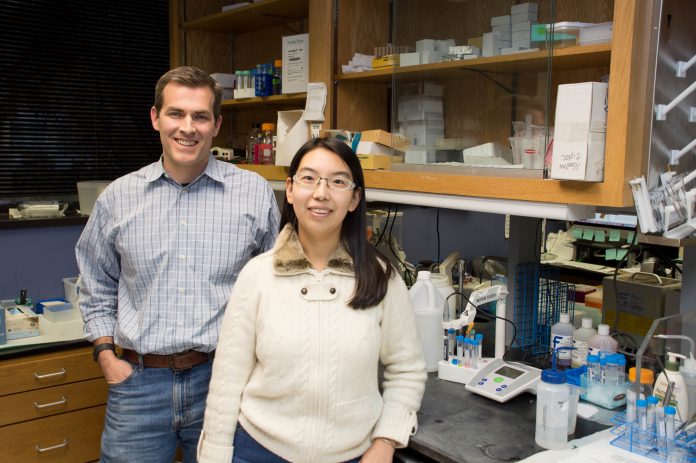Research from the Oklahoma Medical Research Foundation has identified new culprits that may be responsible for the development of arthritis.
The study found that growing older increases the production of a pair of inflammation-producing proteins. It suggests that targeting these inflammatory proteins might provide a path for future development of arthritis therapies.
The new findings, published in the Journal of Gerontology, provide a snapshot of age-related changes in a crucial area of soft tissue in the knee.
A team led by OMRF’s Tim Griffin, Ph.D., and Yao Fu, Ph.D., examined the knee joints of rats as they aged. In particular, the researchers studied the animals’ infrapatellar fat pad, the soft fatty tissue that lies beneath the kneecaps of both rodents and humans.
Scientists have known that these fat pads are a source of inflammation in osteoarthritic knees. And they’ve believed that this inflammation contributes to osteoarthritis, which occurs when cartilage breaks down and wears away.
“It’s actually the most common form of arthritis, often affecting the hips, hands and spine, in addition to the knees,” said Griffin. According to the Centers for Disease Control, an estimated 27 million Americans suffer from osteoarthritis.
Griffin and Fu wanted to look specifically at how aging affects inflammation in the fat pads. Griffin says he anticipated that as the animals grew older, the amount of inflammation produced by the fat pad and the size of the animals’ fat pads would increase.
“But our findings were not quite what we expected,” said Griffin. Specifically, the fat pads actually shrunk while producing higher levels of two inflammatory proteins.
“Our study suggests the fat pad is a contributor to a general increase in knee inflammation that occurs with age,” said Fu. This points toward future treatments to limit the inflammation, which might then prevent osteoarthritis from developing.
However, the researchers did find a benefit to aging in biological conditions that simulated an acute injury—such as a fall that causes damage to a joint. In this condition, the older fat pads decreased their production of leptin, a protein secreted by fat that also contributes to the break down of cartilage.
“We know there is acute inflammation that occurs after injury and can have long-term consequences,” said Griffin. “This study taught us that under certain conditions aging can actually limit the amount of leptin produced by the knee fat pad. This might help us develop new strategies to reduce post-traumatic osteoarthritis, a common cause of the disease in younger active adults.”
Janet Huebner, Ph.D., and Virginia Kraus, Ph.D., of Duke University also contributed to the research, which was supported by grants from the National Center for Research Resources (number RR018758), the National Institute of General Medical Sciences (number GM103441), the National Institute of Arthritis and Musculoskeletal and Skin Diseases (number AR066828), and the Arthritis Foundation.












